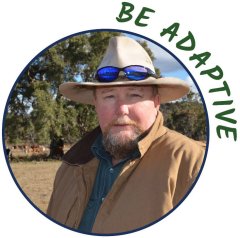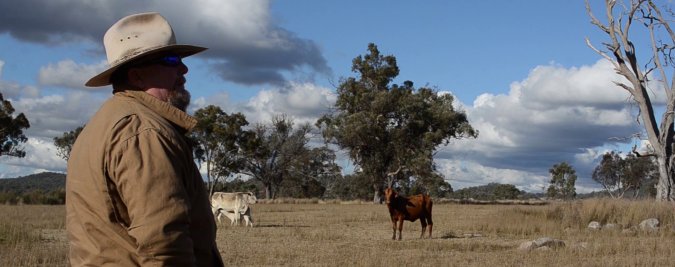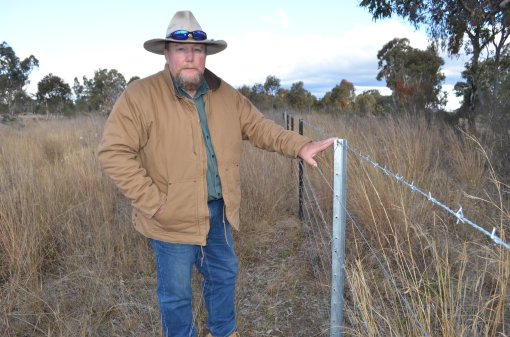-
Featured Items
-
Featured Resources
 Funding & Grants
Don't miss out on funding opportunities. Stay informed with our up to date online listings and email notifications.
Read More
Funding & Grants
Don't miss out on funding opportunities. Stay informed with our up to date online listings and email notifications.
Read More
 Skilled Migration
Our services help both applicants and employers, to learn more, develop plans, submit applications, and settle in.
Read More
Skilled Migration
Our services help both applicants and employers, to learn more, develop plans, submit applications, and settle in.
Read More
 Research and Analysis
Good research and analysis makes the case. How can our resources and services help your project or application?
Read More
Research and Analysis
Good research and analysis makes the case. How can our resources and services help your project or application?
Read More
 Information & Data Resources
With resources like REMPLAN, Regional Knowledge Base, and decades of data, discover how we can help your project.
Read More
Information & Data Resources
With resources like REMPLAN, Regional Knowledge Base, and decades of data, discover how we can help your project.
Read More
-
Stay InformedSubscribe to one or more of our regular email subscriptions, to be kept up to date on news and funding opportunities for the region
-
-
Our Region
- Our Region
- Regional Plan
- Regional Data
- Current Regional Issues
- Population Migration Analysis for 2016-21
- Job Vacancies Continue at All-Time High
- National Debt - What it Means for Our Economy?
- The True Value of Home Solar
- The Economic Impacts of Local Government Amalgamations
- State of the Regions Report 2014-15
- Antifragility - A different take on regional economic development
- Biohubs - Collaborative Waste Management
- Attracting New Residents
- Socio-Economic Impacts of the Murray Darling Basin Plan
- Murray Darling Basin Water Recovery
- Growing Businesses
- The Northern Inland Economy
- Geographical Overview
- Major Industry Sections
- Our Services
- Grants and Funding
-
Skilled Migration
- Skilled Migration
- Skilled Employer Sponsored Regional Visa
- Skilled Work Regional Visa (subclass 491)
- Temporary Seasonal Workers
- Designated Area Migration Agreement (DAMA)
- Helpful Information for Visa Holders
- Information for Employers
- Case Studies
- Payment Details
- Advice & Further Information
- Contact Details
- News & Events
-
Our Projects
- Our Projects
- Current Projects
- The Welcome Experience
- Come On Inland
- Wool Works - Wool Training Schools
- Skilled Migration
- Metal Works - Welding and Fabrication Schools
- Stories of Resilience
- Alt Brothers Beekeeping - Glen Innes
- Carelle's Toy Store - Glen Innes
- Greenhill Orchards - Arding
- Gwydir Meats - Warialda
- Kaputar Motors - Narrabri
- Moonbi General Store - Moonbi
- Sandstock - Tingha
- Sherelle Fashions - Tenterfield
- Sleepy Merino - Inverell
- Tenterfield Chamber of Toursim, Industry and Business - Tenterfeild
- The Welders Dog - Armidale
- Walcha Veterinary Supplies - Walcha
- AGCAP - Agribusiness Careers & Professions
- Northern Inland Regional Investment Profile
- Past Projects
- Digital Economy Strategy
- Business Growth Project
- Go Digital
- How to Start an Online Business
- Create Your Website Using Squarespace
- How to Edit Your Squarespace Site - Part 1
- How to Edit Your Squarespace Site Part 2
- Add a Shop to Your Squarespace Site
- Start a Blog and Find out What Customers are Searching
- 14 Tips For a Better Blog Post
- Which Social Media Platforms are Best for Your Business
- How to Use Facebook Effectively For Your Business – Part 1
- How to Use Facebook Effectively For Your Business – Part 2
- Instagram Tips for Business
- Catching Up, More Instagram & Dealing with Haters
- Getting Started with Twitter for Business
- Social Media Scheduling Tools
- How to Start an Etsy Shop – Part 1 – Research
- How to Start an Etsy Shop – Part 2 – Signup
- Online Security for Your Business
- Product Photography and Website Images: Your Guide
- 5 Tips to Improve your Productivity in your Business
- Best Online Business Resources
- How to Improve Your Communication Skills and Win More Clients
- NBN Coordinator
- Putting Power Back in the Regions
- Road Freight Study
- Town Audit Benchmarks
- Food and Wine
- Youth Survey
- Digital TV Switchover Assistance
- Northern Inland Transport Guide
- Live.Train.Work
- Northern Inland Innovation Awards
- Northern Inland Innovation Awards - 2017
- Northern Inland Innovation Awards - 2016
- Northern Inland Innovation Awards - 2015
- Northern Inland Innovation Awards - 2014
- Northern Inland Innovation Awards - 2013
- Northern Inland Innovation Awards - 2012
- Norther Inland Innovation Awards - 2011
- Prime Super Northern Inland Innovation Awards - 2010
- Prime Super Northern Inland Innovation Awards - 2009
- Northern Inland Innovation Awards - 2007
- Northern Lights Project
- NBN Smart Home
- Murray Darling Basin
- Moree Plains Business Workshops
- Namoi Investment Prospectus
- Industrial Land
- Bioenergy and Local Electricity Retailing
- Northern Inland Business Energy Assessment
- Skills for the Future
- Impacts of COVID-19 on Businesses
- Past Projects of NIRDB
- Aboriginal Employment and Enterprise in the Gunnedah Region
- Art as an Industry
- Aviation Survey
- Farm Forestry - Northern Inland Forestry Investment Group
- New England North West Film Strategy
- Northern Inland Excellence in Business Awards
- Food and Wine 2003 - 2008
- Prime Super Northern Inland Innovation Awards 2009
- Regional Business Networking Program
- Regional Leadership Course 2008
- Viticulture Strategy 2002-2003
- About Us
- Contact Us
- Other Resources
- Privacy and Legal
- Search
- Our ProjectsOur Projects
- Current ProjectsCurrent Projects
- Stories of ResilienceStories of Resilience
- Sandstock - TinghaSandstock - Tingha
Stories of Resilience - Sandstock
Tingha

In February 2019, the township of Tingha faced a catastrophic bushfire. The Rural Fire Service reported that nine homes were destroyed by the Tingha Plateau Blaze, one was damaged and a further 18 outbuildings were lost. Over 18,000 hectares of rural lands were burnt out. Peter Sandral owns a cattle farming business called Sandstock just outside of the town. He was lucky enough to save his home but his entire property was destroyed, left charred and devoid of life. Livestock and native fauna were killed. According to Mr Sandral, rebuilding a cattle farm from the ground up came with some positives. Drought resilient livestock, more suitable pastures and fencing have made his business better now than before drought and bushfires took their toll.
"We went from not too bad,
to absolutely nothing to
feed the cattle."
“We’re only four or five kilometres out of Tingha and our property runs right down to the common at Tingha. We farm 2,300 acres (930 hectares) here, plus another 100 acres of lease country. We run a beef cattle operation. We source our cattle out of Central and Southern Queensland. We have a Bos indicus mix, that’s the Brahman breed type and we breed Charolais over them. We sell the calves at 250 to 300 kgs. We’re running 400 breeders. Every cow on the place must be either pregnant or have a calf at foot or it’s sold. We do run some sheep, not many, about 100 ewes and we join them to a Dorper ram and we’ve since gone to an Australian White ram and we’ve had good results with that,” Mr Sandral said.
Having to Make Hard Decisions
“We came up from the southern Riverina and we bought this property in early 2018. Things looked pretty rosy at the time. We had 200 cows here on agistment, we then purchased 200 cows. Things got dryer and dryer through 2018. We sent the agistment cows off. We made a decision to sell our calves off early. So, in early February 2019, we sold the calves prematurely. It turned out to be a good decision because shortly after that, the fires came through. The fires took all our grass. We weren’t going too bad prior to the fires; it was dry but we had a lot of standing feed. We went from not too bad to absolutely nothing to feed the cattle.”
"After the fires,
it allowed us in quite a few areas,
to have a clean slate."
“The fencing on this place was old-fashioned, so a lot of timber. All the strainer posts were timber. Every fourth post was a timber post. The effect of that was when the fires came through, all the timber posts burnt and timber strainers burnt and the fences fell on the ground. We had cattle walking up the road, so you can imagine what a nightmare it was. From that point on, we had to buy hay, do an enormous amount of fencing and the costs were absolutely ridiculous. As the year progressed, it continued to be dry and we ended up carting water to the cows. They calved, so we bought cotton seed and hay, keeping them alive until the rains came.”
“The fires hit us in February 2019 and as a direct result of that, between hay and fencing, in three to four months, we’d have spent $500,000 to try and get our property up and running and to save our livestock. So, half a million dollars went out. We came here in a pretty good (financial) position from a property we sold in north-east Victoria. We got good money and we bought at the right time but we lost a lot of ground financially. We lost the good position we were in and we had to go back to the bank and borrow money. Since then, we’re on the back of our third very good season but looking back there, it was tough and we shot cows.”
“I suppose the key to it was trimming your herd back, battening down the hatches (so to speak), and working out which cows were the ones that would make it through. So, you picked the cows that held their weight, you trimmed your numbers right back. Then we bought in hay and cotton seed and using those mixtures, we were able to get through until the rains came. I still remember the first decent rain we got was Christmas day of 2019 and we got 25mm of rain. As we started the 2020 new year the rains started coming and it was unbelievable. When the rains came and the grass got up to six or eight inches high, the cattle fattened up overnight. They were pretty poor at that stage. They didn’t get back in calf but we were able to fatten the cows on that grass, sell them and buy back in pregnant cows. We bought back in a lot of cows and that got us up and running again.”
Adopting New Technologies
“Our grasses here are tropical type grasses and they are summer active. European cattle generally don’t take to them that well. Your brahmans and brahman crosses have an enzyme in the stomach which allows them to break down rough feed and feed that is not much use to European cattle. What I think is a key element too is using a quality lick or box and that allows the cattle to break down the dry grasses and make use of it.”
“I have a bit of joke with the blokes around here when they refence their properties and they’re putting timber strainers in and I just shake my head and say the next time there’s a fire, your fence is going to be on the ground. We use a larger post every fourth post, which strengthens the fence, called a maxi-post. It’s also steel. If we have a fire through here now, our fences will remain stock-proof. I think that’s a big plus.
“After the fires, it allowed us in quite a few areas, to have a clean slate. We had grasses that were burnt to nothing. We had 600-700 acres around the house that we sowed to kikuyu and it stays green in the summer and doesn’t grow that long. The cattle love it and that actually gives you a fire break around your house and buildings as well. Your tropical grasses will burn like petrol, it’s unbelievable, especially in a drought, the height in the flames was unreal.”
It is clear that Peter Sandral has taken the lessons he learned in the bushfire and its aftermath very seriously and his beef cattle business is not only better positioned should disaster strike gain but also more productive in the good times, due to the resilience practices he has undertaken.
Watch Peter's Story
Related Pages
- Stories of Resilience
- Alt Brothers Beekeeping - Glen Innes
- Carelle's Toy Store - Glen Innes
- Greenhill Orchards - Arding
- Gwydir Meats - Warialda
- Kaputar Motors - Narrabri
- Moonbi General Store - Moonbi
- Sandstock - Tingha
- Sherelle Fashions - Tenterfield
- Sleepy Merino - Inverell
- Tenterfield Chamber of Toursim, Industry and Business - Tenterfeild
- The Welders Dog - Armidale
- Walcha Veterinary Supplies - Walcha







 Latest News
Latest News


